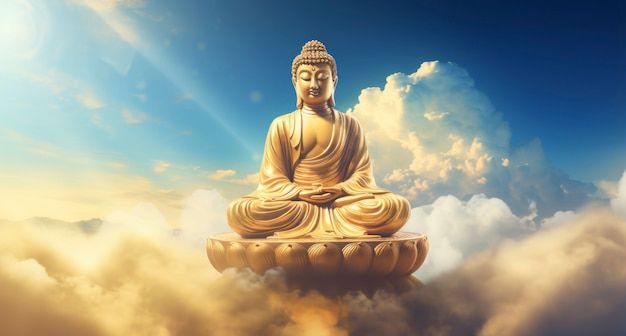In the modern digital age, spiritual imagery has found new life on screens, wallpapers, and digital canvases. One fascinating search term that has been gaining traction is “imagesize:地藏王菩薩 1920×1080”, which blends the traditional reverence for Kṣitigarbha Bodhisattva (地藏王菩薩) with the technical specification of 1920×1080 resolution, commonly known as Full HD. This intersection between spirituality and technology is not just a coincidence; it is a sign of how timeless Buddhist imagery adapts to contemporary culture and the digital environment.
In this article, we will explore who 地藏王菩薩 (Dìzàng Wáng Púsà) is, why people search for images of him in 1920×1080 resolution, how digital art and wallpapers influence spirituality today, and what symbolic meaning these images carry when placed on personal devices.
Who is 地藏王菩薩 (Kṣitigarbha Bodhisattva)?
Kṣitigarbha Bodhisattva, known in Chinese as 地藏王菩薩 (Dìzàng Wáng Púsà), is one of the most beloved figures in East Asian Buddhism. He is often depicted as a monk with a staff (錫杖, xízhàng) in one hand and a luminous wish-fulfilling jewel (如意寶珠, rúyì bǎozhū) in the other. His role is deeply compassionate:
- Protector of beings in the underworld – He vowed not to attain Buddhahood until all hells were emptied.
- Guardian of the deceased – In East Asian tradition, families pray to Kṣitigarbha for their departed loved ones, especially during the first 49 days after death.
- Symbol of infinite compassion and perseverance – His vow is among the most selfless in Mahayana Buddhism, embodying tireless dedication to alleviating suffering.
The name Kṣitigarbha translates to “Earth Treasury” or “Earth Store”, symbolizing the richness, patience, and stability of the Earth, alongside boundless compassion.
Why the Keyword imagesize:地藏王菩薩 1920×1080?
The keyword itself is quite telling. Let’s break it down:
- imagesize: This suggests a search filter commonly used for finding images of specific resolutions, particularly wallpapers.
- 地藏王菩薩: This indicates devotion, interest, or curiosity about the Bodhisattva himself.
- 1920×1080: This is the Full HD resolution, perfect for desktop wallpapers, TV backgrounds, or high-quality displays.
When someone searches for imagesize:地藏王菩薩 1920×1080, they are most likely looking for:
- Digital Wallpapers – Many Buddhists and spiritual practitioners like to have sacred images as wallpapers for meditation, work, or study.
- High-Resolution Art – A clear, detailed rendering of Bodhisattva imagery is essential for visual impact and devotion.
- Personalized Devotion in the Digital Era – In a world where laptops, smartphones, and digital screens dominate, having Kṣitigarbha Bodhisattva present digitally offers both spiritual grounding and modern relevance.
Symbolism of 1920×1080 Wallpapers of 地藏王菩薩
High-resolution wallpapers of Kṣitigarbha Bodhisattva are not just for decoration—they serve symbolic and practical purposes:
1. A Reminder of Compassion
Whenever one turns on their computer or looks at their smartphone, the serene image of the Bodhisattva reminds them of compassion, patience, and mindfulness.
2. Digital Altar
For practitioners who may not have the space for a physical altar, a wallpaper can act as a virtual shrine, serving as a daily point of reflection and reverence.
3. Aesthetic and Spiritual Fusion
Artistic depictions often blend traditional Buddhist iconography with modern digital effects—glowing halos, cosmic backgrounds, or 3D renderings—that appeal to younger generations while preserving symbolic meaning.
4. Protection and Comfort
In East Asian culture, placing images of 地藏王菩薩 at home or in personal spaces is believed to provide protection from misfortune. In digital form, people see this as an extension of such blessings into their virtual environment.
Types of 地藏王菩薩 1920×1080 Images
When browsing for imagesize:地藏王菩薩 1920×1080, one may come across different artistic variations.
- Traditional Paintings in Digital Format
- Adapted from temple murals or thangka paintings.
- Detailed robes, staff, and jewel imagery, often with inscriptions.
- Modern Digital Artworks
- High-resolution 3D renderings.
- Use of vibrant colors, glowing light effects, and cosmic backdrops.
- Minimalist Wallpapers
- Simple line art on dark or gradient backgrounds.
- Popular among those who want a spiritual reminder without visual clutter.
- Photographic Temple Images
- Pictures taken in Buddhist temples, later edited into 1920×1080 format.
- Gives a more “authentic” feel of being in a shrine or sacred space.
Why High-Resolution Matters in Spiritual Art
You might wonder—why does 1920×1080 resolution matter when it comes to Buddhist art?
- Clarity and Detail – Sacred images often carry intricate symbolism. A staff, jewel, halo, or inscription can hold deep meaning, which should not be blurred or pixelated.
- Immersion – High-resolution art helps the viewer feel more connected to the Bodhisattva, almost as if standing before a shrine.
- Modern Displays – With most devices supporting HD or higher, low-resolution images look outdated or distorted.
- Respect and Devotion – Displaying a Bodhisattva in clear, respectful quality is seen as a form of reverence.
The Digital Dharma: Buddhism in the Internet Age
The popularity of keywords like imagesize:地藏王菩薩 1920×1080 reflects a broader trend: the digitalization of religion and spirituality.
- YouTube Dharma Talks – Monks and teachers now share teachings globally through HD video.
- Meditation Apps – Many use visualizations of Bodhisattvas as aids to focus during meditation.
- Social Media Sharing – Images of Kṣitigarbha Bodhisattva circulate on platforms like Facebook, WeChat, and Instagram, reaching millions.
- Digital Altars – Some Buddhists create entirely virtual spaces for chanting and visualization.
This shift demonstrates how Buddhism remains adaptive and accessible, even in the age of smartphones and virtual reality.
How to Use 地藏王菩薩 1920×1080 Images Mindfully
If you download or use such images, here are some respectful practices:
- Set Intention Before Use – Recognize the spiritual significance before simply using it as “aesthetic wallpaper.”
- Avoid Placement in Inappropriate Contexts – Traditionally, sacred images should not be placed in disrespectful spaces. For instance, avoid using them as backgrounds for violent video games or offensive content.
- Use for Meditation – Spend a few moments each day looking at the image mindfully, breathing deeply, and reflecting on compassion.
- Share with Respect – If you share these images online, include context or quotes about Kṣitigarbha’s teachings to preserve meaning.
Conclusion: The Harmony of Devotion and Technology
The search for imagesize:地藏王菩薩 1920×1080 illustrates how modern practitioners balance spirituality with digital life. For many, high-resolution wallpapers of Kṣitigarbha Bodhisattva are more than just desktop backgrounds—they are virtual altars, sources of comfort, reminders of compassion, and symbols of cultural continuity.














